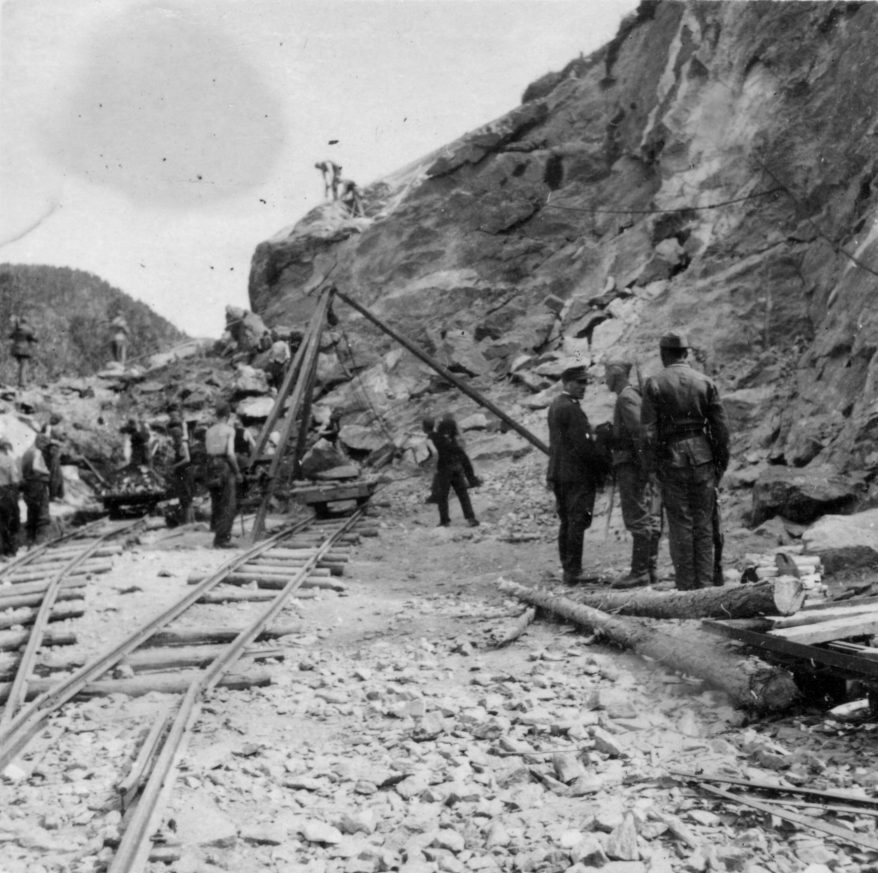In 2019 I developed the idea of making a music based film on the Blood Road in Nordland, Northern Norway.
The work is in progress and was postponed from 2020 due to Covid-19. I will collaborate with Tanja Orning on composing the music, cinematographer Kim Aspen and sound technician Cato Langnes.
During WW2, the paramilitary Nazi German Organisation Todt organised construction of vital warfare infrastructure by prisoners of war and forced labor (German: Zwangsarbeit) held in numerous concentration and prison camps. Hitler wanted a continuous rail and road connection especially through the vulnerable county of Nordland with is many freezing fjords and irregular car ferry routes that connected short, narrow, winding and separate road sections. As a result of persistent reorganisation of the projects and the conflict between an engineering perspective and Hitler’s voluntaristic perspective, a number of Yugoslav captives not being recognised formally by Nazi-Germany as war prisoners were set to work and die in a few especially atrocious SS-run consentration camps, assisted by Norwegian Hirdvakt guards. The Blood Road sections were first built by the Yugoslav captives, while the voluntaristic Polareisenbahn and other projects were built by war prioners primarily from the Soviet Union, but also from other countries under the auspices of the German occupants and its Wehrmacht. Many died. During the Cold War memorials and cemeteries were ill treated, neglected or removed by Norwegian authorities thorugh Operation Asphalt.
The pre-production phase of the film has comprised planning and research on remnants of the prison camps, road sections built by different categories of imprisoned forced laborers, unfinished construction ruins, memorials, museums and other points of interest that will form part of the material. We shoot film footage and record soundscapes.
The method for video footage is filming from a car along abandoned road sections, still in use and new sections, capturing the slow movement through the landscape. Also, shooting aerial footage following the routes through the landscape will slowly form the essence of the surrounding topography. Finally, video footage from the remnants of prison camps and other points of interest are used, to convey the absence of lives that should have been lived.
Musically, there will be three basic elements. Electronic material such as drones or pulses with slow transformation over time, rather raw, saturated by low frequencies or noise is one. Then soundscapes from habitats recorded along the route from ruins of prison camps, graveyards, memorials and unfinished construction ruins – as filled with aural information on the state of that particular place, at that time, or as speaking silence. The third element is acoustical instrument material, layered and slightly electronically processed and blended with the other two.
The actual making of this work is in progress.
Production period 1 with film shooting and soundscape recording was made along the road and on ground June 2022.
Production period 2 with aerial footage was conducted from a small aeroplane between Korgfjellet and Bjørnfjell September 2022.
Music is being composed and the film is edited spring 2023 with finalisation due summer 2023.
The project is economically supported by
– the Arts Council Norway
– the Audio and Visual Fund Norway (Fond for lyd og bilde)
– the Fritt Ord Foundation
